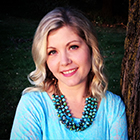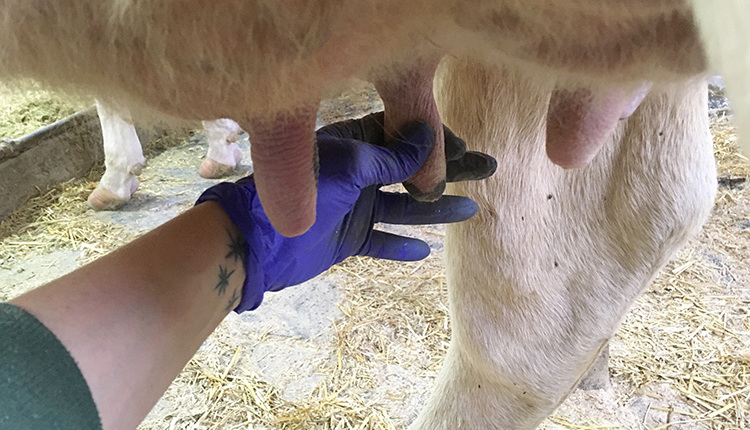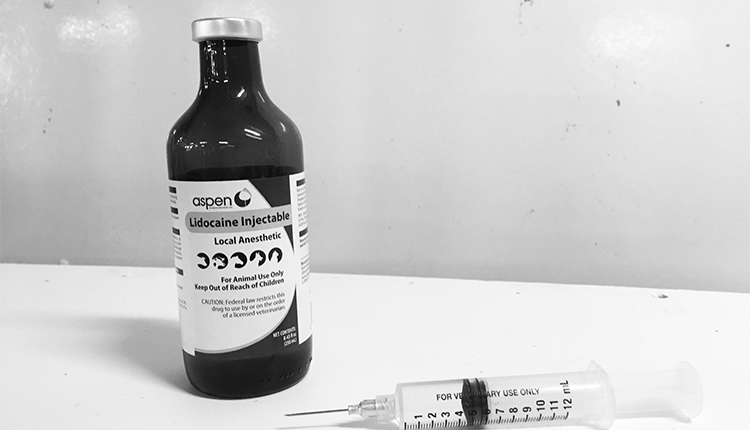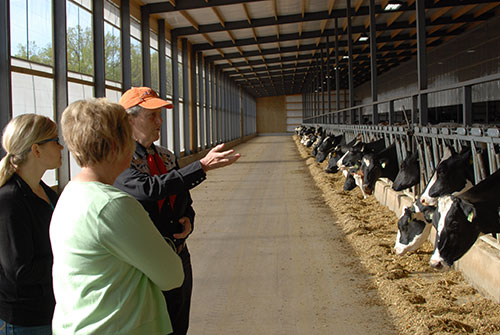
Temple Grandin visits Vir-Clar Farm in Fond du Lac, Wis.
"I saw dairy cows who have a wonderful life today."
That's what Dr. Temple Grandin told an audience of over 700 people during her lecture on autism at Marian University last Friday night in Fond du Lac, Wis. The dairy cows she saw were those at Vir-Clar Farm, which Temple and I toured together on Friday morning.
The farm tour was a result of the interview I did with Temple two weeks ago. Temple said she was very interested in visiting a dairy farm while she was in Fond du Lac. I asked Katie Grinstead at Vir-Clar Farm if we could visit the dairy farm she owns with her parents (Gary and Rose Boyke) and brother (JR Boyke); she agreed that it would be a great opportunity.
My hope was that the visit would allow us to continue our conversation about dairy cow wellbeing. I also wanted to demonstrate that dairy farmers today are managing cows for higher production – and enabling them to reach their full potential – not "pushing" them beyond what is biologically possible.
Katie led the tour, with Gary and JR joining us at the beginning. I also invited Nigel Cook, a professor of food animal production medicine at the University of Wisconsin–Madison, to be part of the visit. Nigel has done extensive research in the areas of dairy cow comfort and lameness and does a lot of work with facility design on dairy farms.
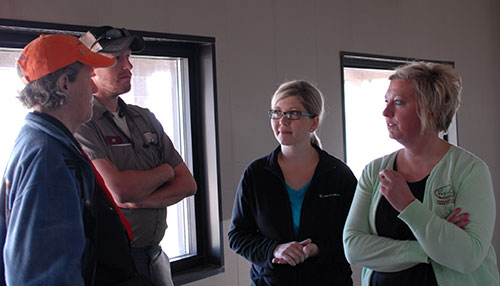
Before the tour even started, Temple said that she was very impressed with how neat and clean all the farms in the area looked.
“That was the first thing we noticed driving from the airport in Milwaukee to Fond du Lac,” Temple said. Even the gentleman traveling with Temple noticed, “And he doesn’t have a farm background. That’s good that even he noticed.”
From the parlor to the freestall barns to the baby calves, Temple had only praise for what she saw. She pointed out how calm the cows were in the parlor.
“They’re chewing their cud even while those loud gates lift up,” Temple said.
She said she was looking for lame cows and hock lesions, but had a hard time finding any.
“I can’t say there aren’t any cows with lameness – no farm is perfect – but I would say that there are very low levels,” Temple said.
She also pointed out that the cows had great body condition, with only one being a little on the skinny side. Keep in mind that, on the day we visited, the 1,837 lactating cows at Vir-Clar Farm were averaging 99 pounds of milk.
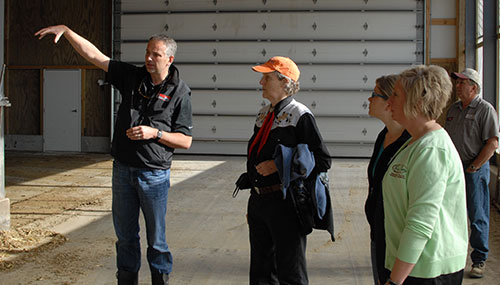
in the freestall barn to Temple Grandin at Vir-Clar Farm in Fond du Lac, Wis.
Vir-Clar Farm has three different freestall barns: one naturally ventilated, one tunnel ventilated, and one cross-ventilated. All three barns have deep-bedded stalls filled with dried manure solids from the farm’s manure digester. Two of the barns have rubber flooring in all walkways; the newest barn relies on grooved concrete to provide good footing for the cows.
Temple noticed that the barns at Vir-Clar Farm didn’t seem to be overstocked.
“It’s important for each cow to have a stall to herself and have a headlock to herself,” Temple said.
Temple was even impressed with the cows in the recovery pen – a separate sand-bedded pen where Vir-Clar Farm houses cows in need of special care.
“These are your hospital cows?” Temple asked, somewhat in disbelief. “They look great!”
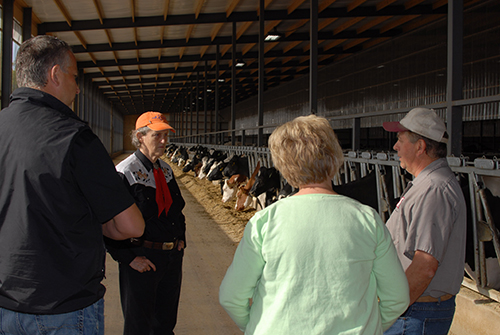
Many times during the tour, Temple stressed the importance of farm management.
“It all comes down to management,” Temple said. “Where management lacks, there can be problems. I don’t see any problems with management here.”
At the end of the tour, Nigel shared the results of his most recent study on dairy cow wellbeing, which included lameness prevalence. Temple and I were both impressed by what Nigel shared.
Nigel’s last study, which was published in April in the Journal of Dairy Science, showed that lameness prevalence in 66 randomly selected, high-producing Wisconsin dairy herds was at 13.2 percent, which is half the national average. That number included every cow scoring above 2 on a five-point lameness scale, which Temple said was impressive for such a strict scoring system.
As an important indicator of dairy cow wellbeing, Nigel’s research shows that there is room for improvement – obviously, lameness should be zero percent – but dairy farmers are finding ways to reduce lameness.
Nigel’s research also reinforces the fact that the high level of dairy cow wellbeing that we saw during the tour isn’t unique to Vir-Clar Farm. Dairy farmers everywhere are making cow health and comfort top priorities.
Temple was also very interested in a chart that Nigel shared, which compared several studies of lameness prevalence.
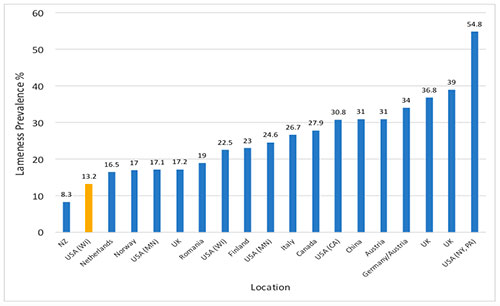
Discussion followed regarding the high incidence of lameness in the northeastern region of the United States. Dairy farmers in the Northeast were the first to start housing dairy cows in freestall barns; we’ve made a lot of improvements to freestall barn design since then.
Temple acknowledged that early adopters often face challenges – and that the rest of us can learn from those challenges. Clearly, learning from each other, through both university research and farmer collaboration, has and will continue to benefit dairy cows.
When I talked to Temple yesterday over the phone, she said she had read through Nigel’s paper on the flight home.
“This really shows that improvements are being made,” Temple said.
